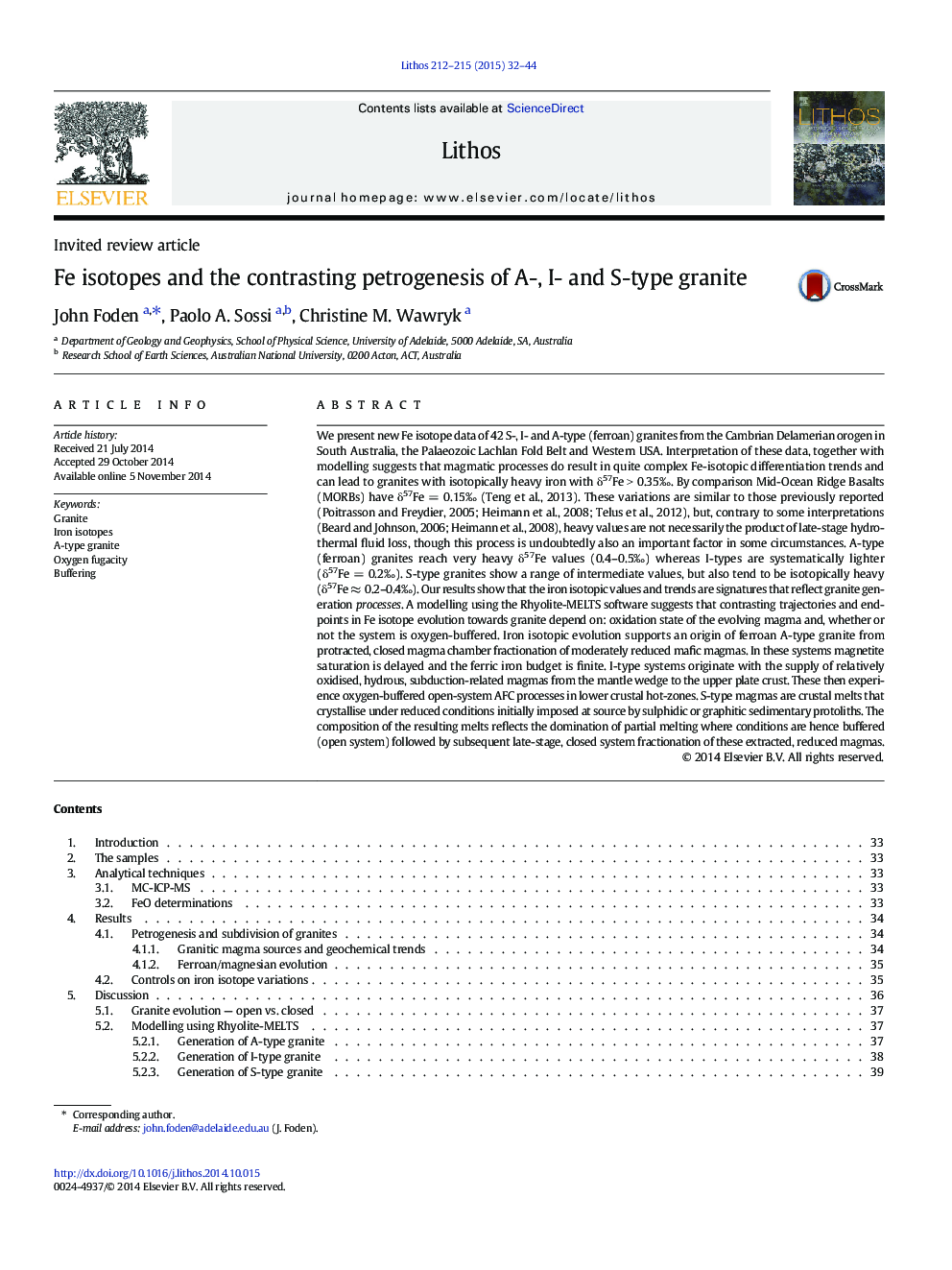| کد مقاله | کد نشریه | سال انتشار | مقاله انگلیسی | نسخه تمام متن |
|---|---|---|---|---|
| 4715783 | 1638669 | 2015 | 13 صفحه PDF | دانلود رایگان |

• Publishes a substantial body of new iron isotope data on granites.
• The paper utilises all this available data to discuss granite petrogenesis.
• Iron isotopes enable examination of key granite formation processes (closed or open magma systems/the role of buffering).
• Modelling highlights the key responses of the Fe isotopes to granite forming processes.
• The paper uses the iron isotope standpoint to make a general discussion of the fundamental controls on granite genesis.
We present new Fe isotope data of 42 S-, I- and A-type (ferroan) granites from the Cambrian Delamerian orogen in South Australia, the Palaeozoic Lachlan Fold Belt and Western USA. Interpretation of these data, together with modelling suggests that magmatic processes do result in quite complex Fe-isotopic differentiation trends and can lead to granites with isotopically heavy iron with δ57Fe > 0.35‰. By comparison Mid-Ocean Ridge Basalts (MORBs) have δ57Fe = 0.15‰ (Teng et al., 2013). These variations are similar to those previously reported (Poitrasson and Freydier, 2005; Heimann et al., 2008; Telus et al., 2012), but, contrary to some interpretations (Beard and Johnson, 2006; Heimann et al., 2008), heavy values are not necessarily the product of late-stage hydrothermal fluid loss, though this process is undoubtedly also an important factor in some circumstances. A-type (ferroan) granites reach very heavy δ57Fe values (0.4–0.5‰) whereas I-types are systematically lighter (δ57Fe = 0.2‰). S-type granites show a range of intermediate values, but also tend to be isotopically heavy (δ57Fe ≈ 0.2–0.4‰). Our results show that the iron isotopic values and trends are signatures that reflect granite generation processes. A modelling using the Rhyolite-MELTS software suggests that contrasting trajectories and end-points in Fe isotope evolution towards granite depend on: oxidation state of the evolving magma and, whether or not the system is oxygen-buffered. Iron isotopic evolution supports an origin of ferroan A-type granite from protracted, closed magma chamber fractionation of moderately reduced mafic magmas. In these systems magnetite saturation is delayed and the ferric iron budget is finite. I-type systems originate with the supply of relatively oxidised, hydrous, subduction-related magmas from the mantle wedge to the upper plate crust. These then experience oxygen-buffered open-system AFC processes in lower crustal hot-zones. S-type magmas are crustal melts that crystallise under reduced conditions initially imposed at source by sulphidic or graphitic sedimentary protoliths. The composition of the resulting melts reflects the domination of partial melting where conditions are hence buffered (open system) followed by subsequent late-stage, closed system fractionation of these extracted, reduced magmas.
Journal: Lithos - Volumes 212–215, January 2015, Pages 32–44